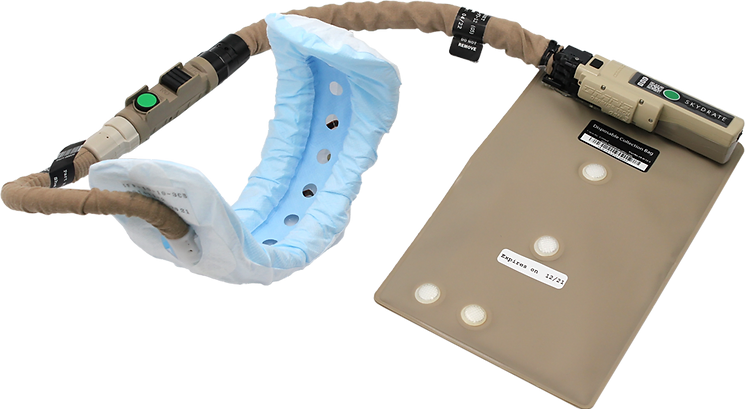The United States Air Force’s mission is to fly, fight, and win…airpower anytime, anywhere. In order to fulfill this mission, Air Force pilots can spend hours in the air on long-duration sorties. While the service outfits pilots with bladder relief devices, the current generation is not optimized for extended flight times and are not ideal for female pilots. This led to aircrew routinely dehydrating themselves to delay the need for bladder relief in the air. Dehydration can lead to health issues as well as reduced combat performance through reduced endurance and G-force tolerance.
This month, the Air Force is scheduled to receive the first shipment of the Omni Gen. 3 Skydrate. The improved in-flight bladder relief device was designed with long-duration sorties in mind. While the Skydrate comes in two systems for men and women, it was designed with an emphasis on engineering solutions for female aircrew. Skydrate features improvements over legacy bladder relief devices including a larger collection bag, improved flow rate, multiple hose lengths, one-hand operation, and more interface or pad sizes to fit the anatomies of different wearers.

The Air Force’s Air Combat Command was the lead command in determining the requirements for the new bladder relief device for pilots across the service. “This is just one of the programs we are working on here that will make it easier for Airmen to train and execute their missions,” said Scott Cota, aircrew flight equipment program analyst, ACC Plans, Programs and Requirements directorate, Joint Base Langley-Eustis, in an Air Force press release. ACC worked closely with Air Force Materiel Command and other units to develop and test Skydrate in just one year.

Testing was conducted on-site at the Omni facility. Thirty female aircrew conducted multi-hour wear tests during the evaluation phase. Nine pilots at three installations participated in flight testing. Maj. Nikki Yogi, an F-35A Lightning II pilot, participated in the Skydrate tests. “A pilot should be focused on taking the fight to the enemy, not on whether their bladder relief device is going to work or be comfortable to use,” she said in an Air Force press release. Yogi had a negative experience with the legacy bladder relief device while deployed as an A-10C Thunderbolt II pilot in 2017 and was determined to help improve the new device for future female pilots. “It’s important to provide feedback because it’s that feedback that drives change.”
The Air Force plans to make Skydrate available to aircrew by Spring 2022. Additional proposals from companies offering alternative bladder relief devices with similar features to Skydrate are expected to be fielded in 2022 as well. By offering a suite of devices, the Air Force aims to give aircrew the opportunity to select the most comfortable device while allowing them to focus on executing their mission to fly, fight and win.


